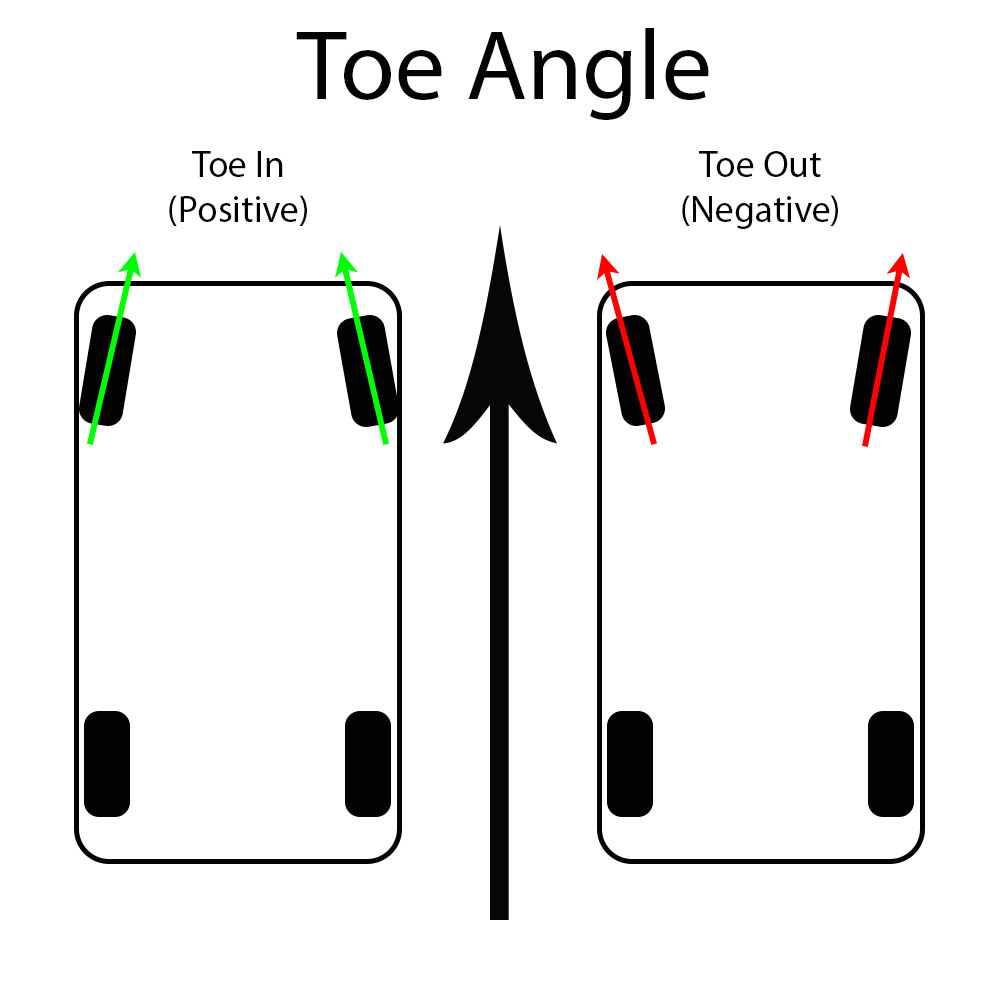a quarter degree of toe out will help with turn in
What is toe?
Definition & Description
The toe angle is the direction the tires are pointed, in relation to the vehicle centerline, viewed from above.
Toe angle can be expressed in degrees or fractions of an inch. If the tires point inward, the angle is positive. This is also called “toe-in.” Tires that point outward have a negative toe angle. This is called “toe-out.”
How is it measured and adjusted?
For accurate alignment, special equipment is required. For experienced car guys,
Wheel Alignment Tools and
Wheel Alignment Parts are available. For most people, however, we recommend taking your vehicle to a reputable alignment shop.
How does it affect performance?
Toe angle is used to compensate for the “give” in the suspension bushings. It helps the tires run parallel to each other.
A RWD car pushes the front tires. Rolling resistance causes the tires to push back against the suspension. So, RWD vehicles use toe-in settings to offset this movement.
A FWD vehicle has the opposite issue. The front tires pull the car. The weight of the vehicle resists the forward movement. This causes the front wheels to pull forward against the suspension. So, FWD cars use toe-out settings to offset the movement.
The toe angle can also affect handling. More toe-in will reduce oversteer and improve stability at speed. More toe-out will reduce understeer.
Despite its benefits, the toe angle can have some draw-backs. Excessive toe settings can cause the steering to feel shaky and unstable. It will also cause excessive tire wear.

